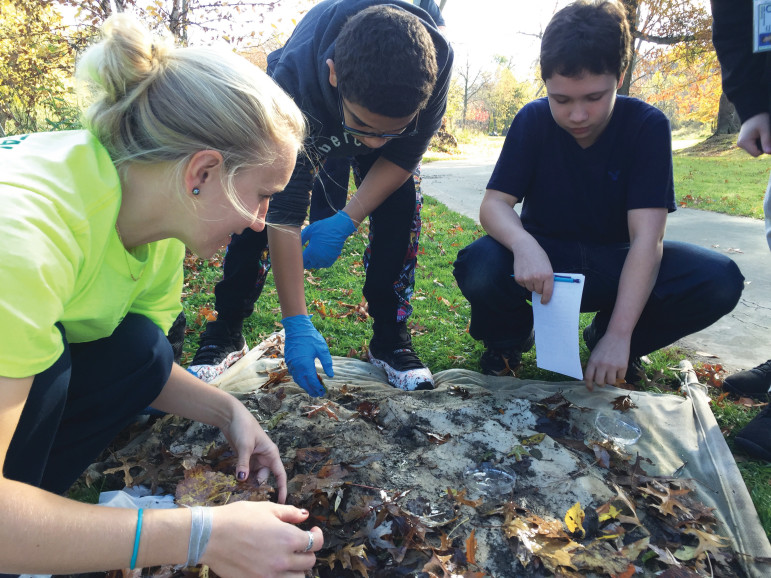
Photos courtesy of Earth Force
Above: Students in Parma, Ohio, work with engineers from General Motors to assess the quality of a local water body. Below: Students in Newtown, Connecticut, evaluate the tributary of a creek behind their school.
Last summer Nancy Meza, 21, began an internship with a Chicago advocacy group, the Little Village Environmental Justice Organization (LVEJO). She and seven other interns ages 16 to 21 were given a tour of polluted places in the community, including the “collateral channel,” a polluted bit of waterway that branches from the Chicago Sanitary and Ship Canal and runs through the Little Village neighborhood, obscured by brush and trees.
The young interns kayaked into the collateral channel to see it up close. “It was green and bubbly,” Meza said. She noted the absence of fish and birds. “It was very bad.”
Joanna Ocampo, youth organizer for LVEJO, described the interns’ reaction to the waterway.
“They were trying to understand why it was so smelly and what was in there and what they could do about it,” she said.
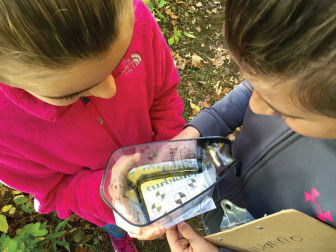 The group then canvassed the nearby neighborhood to see what residents had to say about the water.
The group then canvassed the nearby neighborhood to see what residents had to say about the water.
“Some people didn’t know about the collateral channel,” she said. “They could just smell it.”
The interns created a zine about the history and current state of the waterway. They also held a press conference and announced a community meeting.
At the meeting, Meza encouraged community members to envision a new use for the waterway. Some of them suggested a boat launch; others wanted to fill it in with a community garden or a gazebo.
A blank page in the zine offered a place for residents to draw their vision of a transformed collateral channel.
During the course of the summer, Meza gained experience in speaking to groups and in interviewing people. She learned about the waterway and educated the community about it. From residents, she got ideas about possible uses of the property.
She was also, in effect, experiencing a summer of service learning.
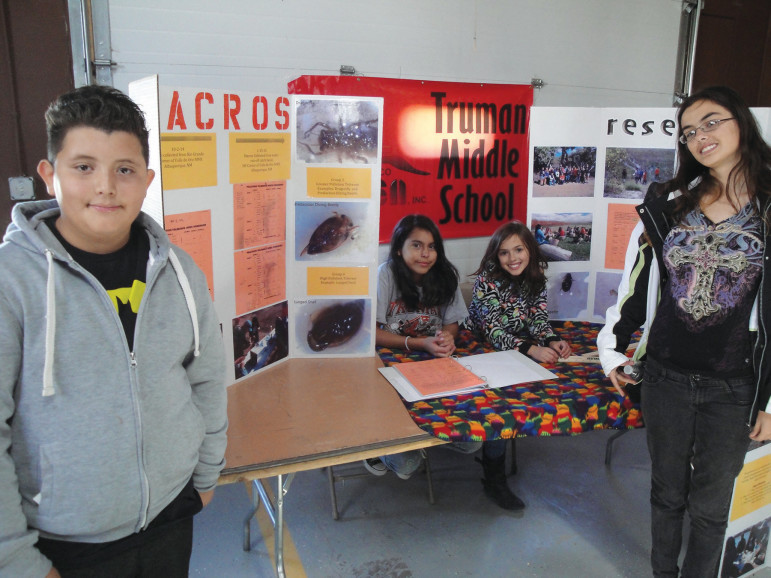
Students in Albuquerque, New Mexico, staff a table at a local community event to talk to residents about the impact of dog waste on their watershed.
What is service learning?
Service learning is a method of teaching and learning that mixes community service with instruction and reflection. The method enriches the learning experience, teaches civic responsibility and strengthens communities, according to Learn and Serve America, a division of the Corporation for National and Community Service.
A YMCA guide describes three important components:
- establish learning objectives,
- provide meaningful service and
- engage in structured reflection.
Service learning is not simply volunteer work or community service.
“It’s a 50-50 split between the service and the learning,” said Ann Saylor, a service-learning trainer and co-founder of the Center for Asset Development in Nashville, Tennessee. Service and learning are equally important, she said.
Service learning is a very good fit for summer youth programs, she said. They have more flexibility than after-school programs since kids are in the summer programs longer than just a few hours after school.
Service learning can help reduce the “summer slide” if you have a really strong program, said Monica Logan, vice president of program and systems quality at the National Summer Learning Association. Even if young people don’t gain academic skills, they may gain “soft skills” in the areas of cultural competence, responsibility and interacting with others, she said.
“It’s far better for high school students to be engaged in these types of activities than being sedentary or inactive” over the summer, she said.
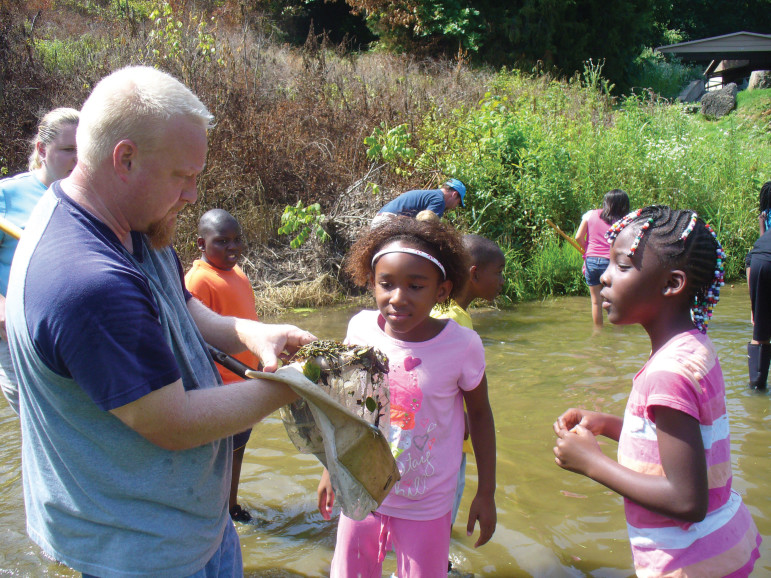
Students in Spring Hill, Tennessee, work with the Tennessee Environmental Council, looking at macroinvertebrates in their local river.
Implementing mission
“It can meet so many pieces of [an organization’s] mission,” Saylor said, including character development, social and emotional skills, leadership skills as well as academics.
“You have the opportunity to sneak academics in the back door,” she said. If kids volunteer at a senior center and hear about World War II from some veterans there, “you’re totally doing history,” she said.
Service learning is incorporated within the work of a variety of community organizations, including churches, academic clubs and child care centers.
It also includes the idea of reciprocity. Those who offer service learn from the ones they serve.
Each summer, Saylor runs a camp for third- to sixth-grade girls in Nashville. Service learning projects take the campers to various places, from the Ronald McDonald House to an animal shelter. At the animal shelter the kids may get to play with animals, but they also may package pet food to deliver to seniors along with Meals on Wheels. Kids would be asked to reflect on how they are helping the community and what the needs of the seniors are.
At Chicago’s Little Village Environmental Justice Organization, Meza and the other interns followed a six-step process created by the environmental nonprofit Earth Force and made available to LVEJO through Chicago’s Field Museum.
The steps were to take an inventory of environmental issues in the community, select one, research the policies and practices around the issue, set goals, plan and take action, and then reflect on what they had done.
This summer, the Greenway Foundation will use Earth Force’s framework at three camps for elementary school kids in Denver, Colorado.
The process can even be used with kindergarteners, said Donny Roush, the urban waters program director at Earth Force.
“We’ll use our tools of doing an environmental inventory,” he said. The kids will go sit along a nearby creek and be encouraged to look around. What do you notice, they will be asked. What’s a part of nature and what is artificial? Kids always notice litter, he said. They may decide that dealing with litter is their service project.
Another kindergarten group decided to buy and release ladybugs, which are beneficial to plants.
Older kids have decided to plant trees or create a mural about water quality, he said.
Service learning’s origins
The term “service learning” was first used in the 1960s, but the roots of the movement are in the extension programs at land grant universities in the 1800s. During the Progressive era, settlement houses involved an ethic of service and learning by doing, according to authors of the book “Service Learning: A Movement’s Pioneers Reflect on Its Origins, Practice, and Future,” by Timothy K. Stanton, Dwight E. Giles Jr. and Nadinne I. Cruz.
The New Deal of the 1930s and later the activism of the 1960s and ‘70s involved a push for justice and education through action. The Peace Corps and VISTA are both about service and learning.
In 1990, Congress created the Corporation for National and Community Service, which runs AmeriCorps and SeniorCorps.
Through its Learn and Serve America arm, the corporation provided grants to states and school districts — an average $40 million per year — to support service learning. Congress ended that funding in 2012, however.
But service learning has grown and been embraced by schools and colleges. Today 33 states include service learning in their public school academic standards, according to the Education Commission of the States, a nonprofit that provides research for state officials. Seventeen states identify service learning as an instructional strategy that improves student achievement. Maryland and the District of Columbia require service learning or community service for graduation, according to the commission.
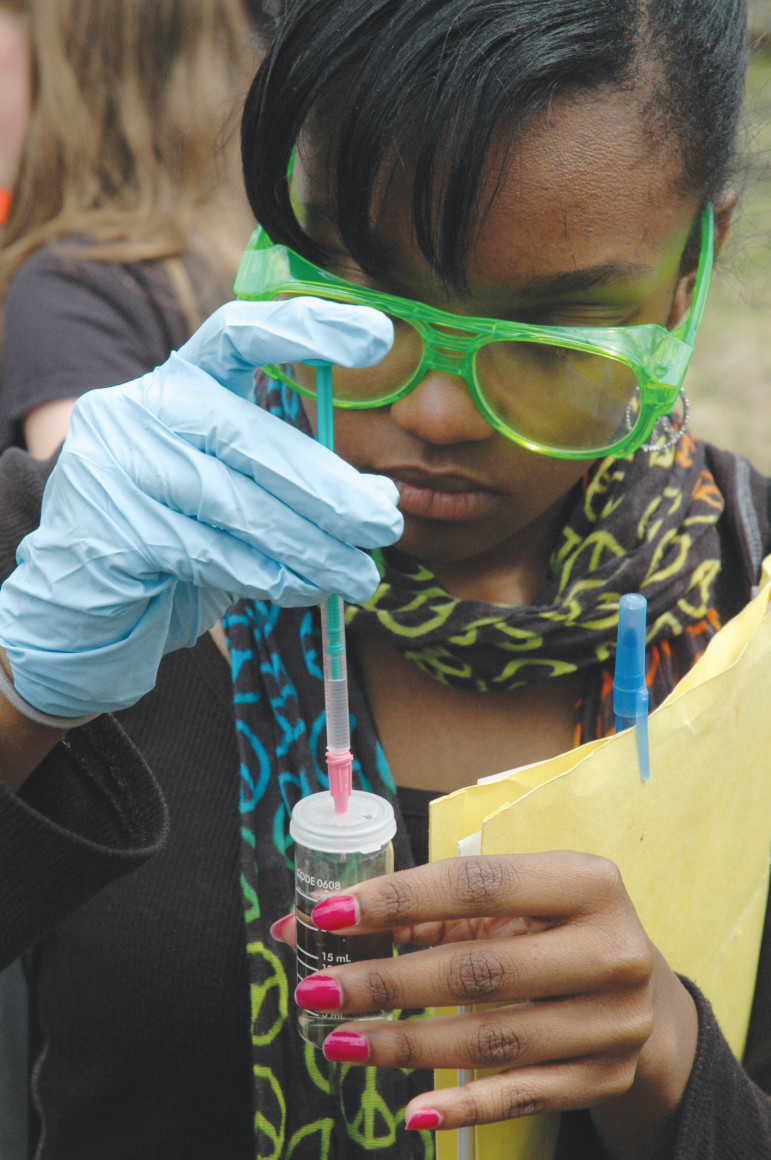
Service learning professionals say the most powerful service learning comes from a combination of both the experience and debriefing or reflecting on it. A Michigan student titrates a dissolved oxygen sample as part of Earth Force’s service learning curricula.
Some problems
As service learning has spread, the quality of it has varied dramatically, said Shelley H. Billig, vice president of RMC Research Corporation and an advisor to the National Service Learning Clearinghouse. The way in which it is implemented makes a big difference, she wrote in her 2007 report “Unpacking What Works in Service- Learning: Promising Research-Based Practices to Improve Student Outcomes.”
Saylor agrees that some youth-serving community-based organizations don’t do service learning well.
“More organizations know what they’re doing now than they did 10 or 15 years ago,” Saylor said. But many skip important pieces. “Organizations often leave out the prep work,” she said, or they skip the reflection afterwards.
“Leaders sometimes fail to realize that the most powerful parts of the service experience stem from introducing the topic well and debriefing the experience,” she said.
The learning component takes more time than the service component, she said.
“It was very eye-opening.” Meza said, of her work with the collateral channel in Chicago. She really liked the fact that the youth got to choose the issue they worked on. The project actively engaged her in the community. She and the other interns did all the work of researching and creating a zine, talking to the press and holding a community meeting.
The skills she developed provided an added bonus. In December she was hired by LVEJO.
What service learning is:
An act of love, hospitality and justice
An act of giving and receiving
Doing the work to understand the work
A way to uncover the root causes of issues and systemic injustices
An act of empowerment and liberation
A spotlight on the human condition and the connectedness of all persons and all persons’ struggles
A place for youth to acknowledge their own struggles and see them in a broader social context
A nightly equalizer reminding us that we all have something to offer
What service learning is not:
Something to do during our spare time
Just for the privileged
All about feeling good and having fun
A one-sided gift
An experience to be crammed into a one-hour session
A project for adults to plan for young people
Source: “Ready-to-Go Service Projects: 140 Ways for Youth Groups to Lend a Hand,” by Susan Ragsdale and Ann Saylor http://bit.ly/20MKkCb
Service learning best practices
The National Youth Leadership Council has developed a list of best practices for service learning.
- First of all, the service must be meaningful. It must be age-appropriate and engaging for the participants. It must be relevant to the recipients and provide something of value to them.
- It involves reflection. Young people are challenged to think about what they’re doing at various points along the way. They reflect on both themselves and their relationship to society.
- Youth voice should be present in developing a project, carrying it out and evaluating it.
- Progress is monitored and measured against specific goals. This assessment is used to improve the project.
- A curriculum or set of learning goals is used.
- Diversity and mutual respect among people are promoted.
- Partnerships with other groups are beneficial to each. They are collaborative and address community needs.
- The project has proper duration and intensity to address community needs and meet the described outcomes.
- Research shows that when these practices are followed, young people benefit.
Resources
- The National Youth Leadership Council describes eight best practices for K-12 service learning. nylc.org/advance-the-field
- The Generator School Network is an online community of more than 5,000 youth involved in service learning. It offers resources, lists of projects and the ability to communicate about them. gsn.nylc.org
- The YMCA offers resources including the publication “Engaging Teens With Their Community: A Service Learning Guide” as well as YouTube videos of various projects. www.ymca.net/service-learning-resources
- The Center for Asset Development offers a curriculum “Seasons of Service: Engaging Youth in Service Learning Throughout the Year.” theassetedge.net/seasons-of-service.pdf
Service Learning Components
Basic steps for effective service learning, according to the Search Institute and Learn and Serve America, include:
- Investigate the community to see what’s needed.
- Prepare a plan for what you will do.
- Act on the plan.
- Reflect on what you did, accomplished and learned.
- Demonstrate and celebrate the work and the learning.
- Sustain your service learning efforts.
For more reading about service learning:
- The Roots of Engaged Citizenship Project (civicroots.org), a study that looks at how young people “become good citizens” and identifies the “developmental roots” of active community participation.
- Inspired to Serve: An Online Tool Kit for Youth- Led Interfaith Action (inspiredtoserve.org), developed as part of Learn and Serve America supported by the Corporation for National and Community Service.






























